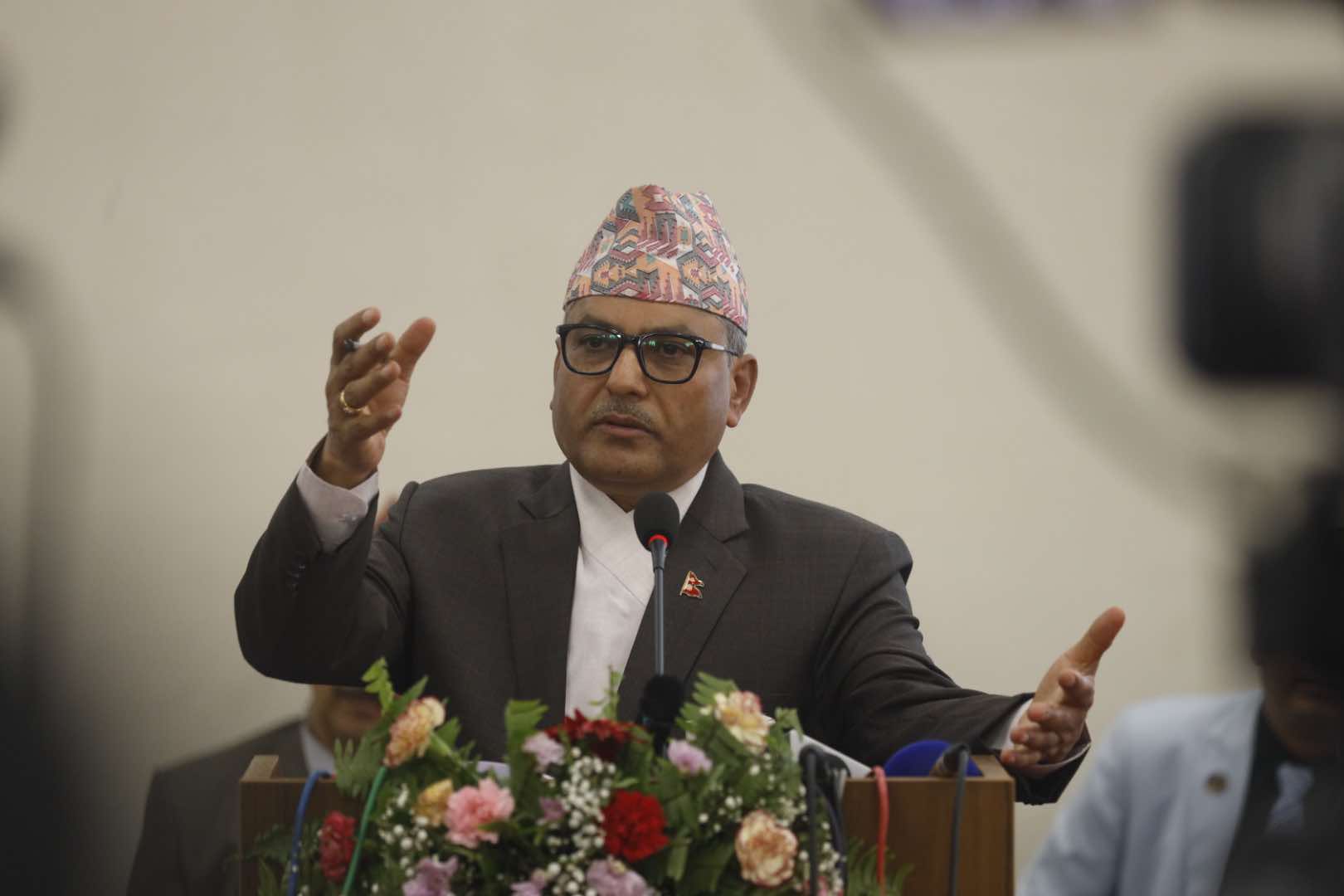Hindu gods and goddesses killed in the Hindu kingdom!
We use Google Cloud Translation Services. Google requires we provide the following disclaimer relating to use of this service:
This service may contain translations powered by Google. Google disclaims all warranties related to the translations, expressed or implied, including any warranties of accuracy, reliability, and any implied warranties of merchantability, fitness for a particular purpose, and noninfringement.


After dealing with the New Year greetings, let's look at a calendar, which tells about the days to come and not the days gone by. It helps to look back to make the right decision about which path to take in the future. This calendar tells about the year 2030, fifty years before today.



It shows the planets of Rahu, Ketu, Shani etc. that year for the Hindu goddesses and their ornaments, what hardships those goddesses had to suffer and how those who destroyed the goddesses did this work uninterruptedly.
On 13th Baisakh of that year, it was learned that the old golden Ganesha statue was stolen from Bhimfedi market in Makwanpur. That statue was fifty years old.
After that, on 15th Baisakh, it was learned that precious jewels were stolen from the Ram temple at Karamayan Ghat in Morang Thalah.
At the end of Baisakh, the first month of that year, more bad news came from the East. According to him, seven idols, including a stone idol of Lord Krishna, four cast iron idols of the Gopinis, an aarti with an idol of Garuda and a seat of Gopalji were stolen from the Krishna temple at Hulak Tol in Dhankuta. Soon after that, on 29th Baisakh, 2030, it was found that the statue of Ramalakshman was stolen from the Ram Temple in Upper Kopche, Dhankuta. The year before that, some idols were stolen in Dhankuta. Throughout the year 2030, reports of idols and jewelry being stolen from all over Nepal came out again and again. Not all news about idol thefts came out. So more idols were stolen that year.
To steal idols and to smuggle the stolen idols abroad, the thieves went to Ilam, Jhapa, Dhankuta, Sunsari, Morang, Sankhuwasabha, Bhojpur, Kavre, Sindhupalchok, Parsa, Makwanpur, three cities of Kathmandu, Tanahun, Rupandehi, Palpa, Syangja, Baglung, Arghakhanchi, Active in Dolpa and Banke. At that time, Nepal was a Hindu kingdom. The source of this country's authority was 'the follower of the Aryan culture, the Hindu religionist Gaddinsin Shri 5 Maharajadhiraj'. The sovereignty of Nepal was vested in Mousuf, "all executive, legislative and judicial powers were derived from Mousuf".
Mousuf government would not be above the constitution! The Mousuf government was a descendant of Shri 5 Badamaharajadhiraj Prithvi Narayan Shah who had the goal of making Nepal a real Hindustan. The constitution at that time was proud of that matter.
In Nepal, a country with such a religious and majestic Hindu king, even after Baisakh, as in previous years, the idols and jewelry of Hindu gods and goddesses were stolen and smuggled. Only a few of those who committed such a sin against Hinduism were caught, many of those who were caught were easily released.

According to the Hindu ruler and some, in the country under the umbrella of the 'world's only Hindu emperor', sin and evil were boiling, and the priests of temples and monasteries were caught by the police for selling the idols they worshiped.
Let's look at some examples of this. The priest of the same temple gave a statement that he had stolen five gold idols inside the Chandeswari temple in Banepa. The priest of the temple along with the curio dealer who bought the idol was arrested on charges of stealing the idol of Veer Bhagwati from Ichangunarayan Than.
On August 19, 2030, two people were arrested with seven idols in Baglung. They brought seven idols from the monastery of Nakum village in Mustang. They said that the statue was sold by the priest of the same monastery.
Idol thieves and smugglers were only caught by the smartest. In that year many cases of idol theft came to light, but only a few cases of arrests came to light.
Only petty thieves who were not involved in gangs were caught. Some thieves were caught only because of their planet or kubuddhi. For example, let's talk about two hoteliers who send idols from Kathmandu to Butwal and receive such idols in Butwal.
In the first week of October 2030, the police arrested the owner of a hotel in Kathmandu from Khasyuli market in Butwal. 12 idols of Ganesha, Shivaji, Bhagwati and Buddha in different postures were also seized from them. The police estimated that the statue was 100 to 200 years old and would be sold for three lakhs at that time.
After this incident, the police found out that the idol was being sent from the hotel in Kathmandu to the hotel in Khasyauli, Butwal. Then the statue is sent abroad. Twice before, idols have been sent abroad in this way.
To get such a big success, the police do not have to do anything. According to the news related to that incident, the letter sent to the hotel owner claiming to have sent the statue "mistakenly fell into the hands of the police, and the police succeeded in arresting the accused".
The arrested idol thief could have escaped even if he was caught by the police. On August 15, 2030, a man was caught by the police with four idols in the lower part of Ilam. He escaped from Chisapani village on the way when the police took him to Ilam.
Meanwhile, the police were active in not letting the people under their command escape. Six months before the idol thief's escape, the five prisoners of the Jhapa case who were going to be taken to Ilam from Jhapa were 'about to escape' when the police shot them dead in the Sukhani of Ilam. The person who stole the statue could easily escape from the police.
The idol thief is a big one, he has stolen many idols and even if he is in trouble, the police are on the right side. Let's look at an incident in July and August of 2030.
The customs office tried to check 6 suitcases of travelers going to Switzerland at Tribhuvan International Airport. Saying that 'someone else has taken the key', the traveler left the suitcase there, saying that 'he will take it back when he gets the key'. Later a foreigner came with a key and asked for a suitcase. When customs opened the suitcase, they found 80 statues and old illustrated books. Most of the idols were more than 100 years old and of archaeological importance, which could not be taken abroad. .
Customs arrested its Nike and handed over the man, statue and book to the police. At the end of August, the police informed the local administration that the statue was found in an abandoned state.
The police did not find out when the statue was bought and sold in Kathmandu, and did not find out until they reached the airport . The idols, which were handed over by the customs even to the people, were neglected by the police. Protected the people who smuggled those idols.
In other words, the Hindu ruler's police force was trying to protect the smuggler who was on a mission to destroy Hinduism by stealing Hindu gods and goddesses.
The police used to arrest the small idol dealers, but many of them were released from the court because of the lack of evidence submitted to the court.
In October 2030, the court released a person who was taken to court on the charge of selling an idol about three cubits long. Mechi District Court fined two American citizens with 12 idols and let them go after being fined Rs.
In 2030, the Bagmati Special Court acquitted a person accused of stealing ancient idols for lack of evidence. Two people from Darjeeling were fined Rs.
Yes, the Dolpa District Special Court has ordered the detention of 6 people, including the residents of Takshi village in Dolpa, who bought five Buddha statues.
In the case of idol theft, by turning a blind eye like this, idol theft was easily escaped, so this crime was widespread. The idol thief was a thief. Therefore, by the end of 2030, the idol thief was able to steal the idol from the government museum. They stole the statue of Bajbarahi from the museum in Lalitpur. The gold plated statue was built in the fourteenth century.
The year 2030 has ended, other years are ending and the new year is approaching. However, the idol theft did not end. This is evident from the incident of idol theft in the year 2041. As many as 30 idols were reported stolen that year. Since not all cases of idol theft come to light, more idols must have been stolen that year. In three of these cases, the police arrested the thief. The court decided that year two idols were stolen and one idol was moved.
He was imprisoned for one and a half years and fined up to 45,000 rupees for stealing and selling idols. It is to be remembered that in the year 2030, the American citizen who was going to take the statue abroad was fined 1000 rupees by the court of Nepal. It is clear from this that Nepalese courts punish foreigners less and Nepalis more in the case of idol theft.
Bhaktapur, Kavre, Dolakha and Lalitpur were among the districts where thieves stole the most idols in 2041. They stole four idols from Bhaktapur, four from Banepa, three from Dolakha and three from Lalitpur.
That year idol thieves also stole an idol of a strange deity. Such gods are— Balabhadra. Balabhadra is believed to be the first deity to teach rice farming in Nepal. There is a legend that mustard oil applied to the head of the idol of Balabhadra gives birth easily to a woman in labor. A five feet high stone statue of him was installed by Anshuvarma. When
arrived in February 2042, the statue was not stolen, but robbery. Twelve robbers came with a mini-bus to steal the idol of Balabhadra. No one could stop them.
In the month of March, idol robbers were brave enough to uproot the idol with a crane. One night, robbers who went to Bhaktapur with a crane tried to uproot a full-sized statue of Bhupatindra Mall at Durbar Chowk with the help of a crane. After the local residents protested and the police officers stationed there did not allow them to do so, they had to return empty-handed.
The police officer who stopped such a powerful bandit from robbing the idol was sent to Britain for 'training' after some time. After this, the robbers' work could be unopposed.
This scandal in Bhaktapur did not come to the official media. It came only in private sector media. Immediately after this incident, there was a surprising news in the government media that the police had been active in stopping the theft of idols. According to the news published on 28th Chait 2041, the police arrested a gang of three people who stole idols in Kathmandu. The police also recovered seven idols from them.
According to the same news, the police arrested another person while he was walking to sell the statue of Chandeshwar near Pashupati Vankali with an iron rod.
Crane publicized his bravery by saying that the police, who were not interested in arresting idol-pullers, had arrested 'iron-rod idol-pullers'. By doing this, the crane can be a bit slower.
When the idol thieves were so busy and they were able to do this without any interruption, the devotees were forced to sit and watch the empty installation of their gods and goddesses. Devotees were forced to wrap the idol and pylon with iron rods so that thieves could not easily steal them. In other words, the goddess who lived freely for centuries had to be surrounded by the rod. After the idol thief did not have to go to jail, the idol had to be jailed.
After the thieves broke the head of their deity, the devotees made a new head out of cement and attached it to the deity's body. Devotees were forced to worship goddesses with modern, but ugly heads placed on artistic and ancient bodies.
For Hindus, these idols are not living idols. The deity is enshrined in the idol. After this, those idols made of stone or metal do not remain just idols, they become real gods and goddesses. Therefore, the devotees worship the idol considering it to be a deity. Removing the idol means not allowing those who believe in the Hindu religion to be close to the deity, it is killing the religion.
Arya culture follower of Hindu religion Shri 5th Maharajadhiraj Gaddinsin Hoibakse How did such injustice spread? Why didn't the Hindu ruler, the descendant of Shri 5 Badamaharajadhiraj Prithvi Narayan Shah, who had the goal of making Nepal a real Hindustan, stop such injustice? When these idols were stolen, Mousuf was not as innocent as he was during the Rana period. Sovereignty was vested in Mousuf. Mousuf was above the constitution. Nobody - not even in the judiciary or the legislature - could raise a finger about what Mousuf had done. However, why didn't Mousuf stop the continuous attack on Hindu religion?
The answer to this was not given openly, but only suppressed - because the Mousuf government was innocent and the prince Dhirendra Birvikram Shah, who was everywhere in the government, was involved in this work.
Kumar Daderndra Viirvika Vioor Viorivika Vihivram Vioevika Vihivika Vihivika Vihivika Vioim Shah was' active shocked to engage in the nation's construction. Muthor Pronounced National Grouping Council was thrown. So Say Milak to say that pinches would like to be treated involved in such things. & Nbsp;
, Drive paragraphs of Nepal's economy and Foreign Message Different Pallast, Viko Bahadur Thapa, who was the Hindu king, said, 'Kajka Brother Kri Radrandra Peace Wellcoming . Mususfo '' was limited to the police and the security he adopted. '& Nbsp;
should add this to another unreal for. That is, when the monarchy became powerful in Nepal, as soon as Nepal's Hindrical territory had taken policies, the loss had not yet had the damage that has not reached. An anti-historic anti-Hindukhi opposition in Nepal, has never been able to any indulmed by a minimal woman.
now, Sultan of Bengal, attacked the Kathmandu Valita and NBTanath. Because he returned soon, he did not constantly destroy. Suni, Ran Bahadur Shah tried to destroy some idols and temple, but he did not. The Maoists destroyed the temples and idol in the struggle while fighting. But when the king was longed, Hindrife and natives were constantly destroyed. Why such a destruction was made this way, so it was not the sound of bengal, like King Ran Bahadur, like the Maoists, and the Maoists were not anti-religious activities. The guardian of Hinduism had protected. & Nbsp;
(All Pictures: Euro-Picture Shikko 'From the Gads R Living the Country' Sant-Break
 प्रकाशित : वैशाख १, २०८१ ११:२३
प्रकाशित : वैशाख १, २०८१ ११:२३

 २७.१२°C काठमाडौं
२७.१२°C काठमाडौं
















